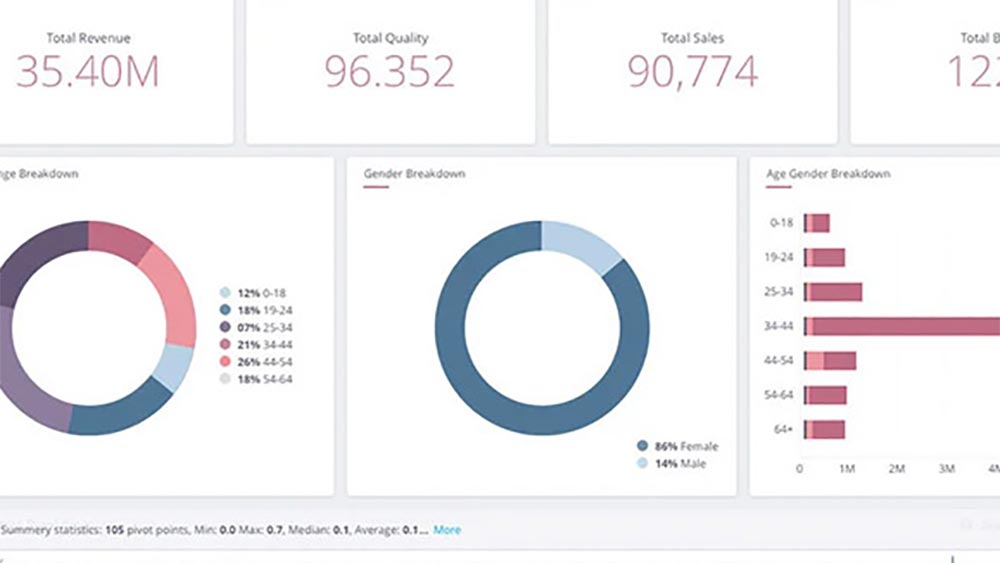While the impact of COVID-19 is being felt all over the world, retail is among those sectors which have been hardest hit. It is fraught with low supply and demand, dysfunctional supply chain, and an increasing reliance on customers. As retailers continue to struggle, few critical trends have emerged which range from changed product mixes to complex consumer-retailer interactions defined by safety, and growing demand for convenience. This has led businesses to quickly adopt new technologies as they navigate unchartered territories, and try to stay relevant and profitable.
It has been seen that NLP models are often used to analyze social media and news, which in turn helps determine customer sentiment. Text mining and sentiment analysis enable retailers to closely monitor the comments which customers share on social media. This gives them an idea of what customers buy most often, their feedback on the product availability, and their changing preferences. With adequate samples of conversations which customers engage in, NLP models can predict goods which are running out of stock and need to be replenished. They can also detect slight changes in the purchase patterns, thereby improving the accuracy of demand forecasting.
AI is revolutionizing retail
It would not be wrong to state that now is the time for brands to think digital. In their effort to meet changing customer requirements, it is technologies like artificial intelligence (AI) and machine learning (ML) which will help them stay afloat. As compared to traditional analytics, they come with an entirely new level of data processing capabilities which leads to more valuable insights. At present 28% of retailers already deploy AI/ML solutions which equal to a seven-fold increase from 2016 (Source: SPD Group). By adopting AI, retailers can glean valuable insights from customer intelligence and behavioral data and make informed decisions. By capitalizing on AI, specifically on ML retailers are providing immersive experiences to captivate customers, synchronizing offline and online channels for seamless service delivery, and redefining traditional supply chains on the lines of flexible systems which accurately respond to shifting consumer mindsets.Demand forecasting
Amidst all these changes, retailers are faced with one critical question, which is, how will the pandemic impact demand and how can they accurately predict the shift? Many retailers are turning to ML-powered demand forecasting to adapt to today’s reality. In contrast to traditional forecasting methods, this new approach is more adaptable to changes and can be implemented faster. ML enables systems to learn automatically and improve recommendations with data alone, without relying on human intervention for additional programming. As retailers generate large amounts of data, ML technology can often deliver significant business value. When data is fed into an ML system, it searches for patterns and uses them for better decision-making. In most cases, ML makes it possible to incorporate multiple factors and correlations which impact demand into the retail forecasts. And, it is possible to enhance the accuracy of demand forecasting by optimizing the systems with POS data, NLP models, and recent data from external sources.It has been seen that NLP models are often used to analyze social media and news, which in turn helps determine customer sentiment. Text mining and sentiment analysis enable retailers to closely monitor the comments which customers share on social media. This gives them an idea of what customers buy most often, their feedback on the product availability, and their changing preferences. With adequate samples of conversations which customers engage in, NLP models can predict goods which are running out of stock and need to be replenished. They can also detect slight changes in the purchase patterns, thereby improving the accuracy of demand forecasting.
Pricing Optimization
Besides demand forecasting, pricing is another area where ML comes of use. With the dramatic shift to online channels, the pricing strategy and competitive pricing have significant implications for retailers. Those who believe in setting prices based on conventional metrics may fall behind. Machine Learning algorithms can decipher unconventional relationships between multiple parameters which provide valuable insights and help set the optimal price. Specifically, ML helps retailers determine the price elasticity, ie the impact of a price change on a product’s demand. This capability plays a vital role in promotion forecasting and in optimizing markdown prices, especially when retailers need to clear out stocks. However, price elasticity alone might not capture the complete impact of a price change. The prices of alternate products within the same category often have a significant impact as well. Here advanced ML algorithms can be deployed and a product’s price position determined in a straightforward manner.Supply chain management
Apart from forecasting the demand and determining the best price for a product and service, managing the supply chain effectively is equally crucial. Supply chains have always been vulnerable to natural disasters, disruptions and geopolitical issues. But the upheaval caused by the COVID-19 pandemic has been one of a kind. It has led businesses to take a close look at their supply chain management strategies, both for sustainability and growth. It has been seen that predicting the future demand for production remains one critical challenge in supply chain management. Here machine learning takes into account multiple factors which cannot be tracked through existing methods which retailers rely on. ML is used by businesses to conduct an in-depth analysis of individual customers and predict their future buying behavior. This helps tailor the production and transport processes to the actual demand, thereby enabling businesses to deliver value and build a relationship of trust with their customers.On a concluding note
AI and specifically machine learning will impact almost every aspect of retail operating models. While traditional retailers have hesitated to wade into this technology, they cannot wait further. On the other hand, their forward-thinking counterparts who have already embarked on an AI-enabled future are more poised to gain an edge and leapfrog their competition. While there may not be a one-size-fits-all solution, the test-and-learn attitude will help them realize the full potential of emerging technologies.Resources:
- https://www.forbes.com/sites/danielnewman/2020/06/23/4-actionable-customer-experience-statistics-for-2020/?sh=434c4fe91a84
- https://www.salesforce.com/blog/customer-engagement-trends/
- https://us.epsilon.com/pressroom/new-epsilon-research-indicates-80-of-consumers-are-more-likely-to-make-a-purchase-when-brands-offer-personalized-experiences























